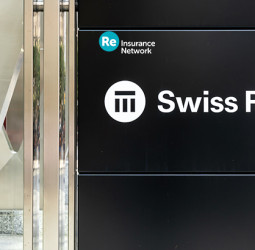Equity analysts at the UK investment bank Peel Hunt have factored a potential 35% decline in reinsurance rates into their five-year outlook. This projection assumes a softening market cycle for the reinsurers they monitor.
The analysts consider their estimate for rate softening to be conservative and plan to refine their projections over time. They noted that the January 2025 property catastrophe renewals signaled the start of a softer market cycle, with reinsurance rates declining by an average of 9%, based on broker estimates. For example, Guy Carpenter reported a drop in loss-free property catastrophe rates ranging from 5% to 15%, while its indices showed decreases of 6.6% globally, 6.2% in the US, 5.3% in Europe, and 7.2% in Asia-Pacific. Howden Re estimated an 8% reduction in rates, with retrocession seeing an even sharper decline of 13.5%. Similarly, Gallagher Re reported varied rate changes, including U.S. treaties renewing flat to down 10%, loss-free treaties in Australia decreasing up to 7.5%, and some Korean treaties falling by as much as 25%. However, U.S. loss-impacted rates-on-line increased by up to 15%.
Peel Hunt acknowledged that the 9% average decline exceeded their expectations. They highlighted that exposure growth likely offset some premium reductions, with property catastrophe rates still 60% above 2017 lows. Furthermore, retrocession rate softening reduced underwriting margins by approximately 7% to 8%.
Regarding the impact on reinsurers, the analysts noted it would depend on factors such as exposure changes, geographic weighting (with a focus on U.S. markets for their coverage universe), and portfolio diversification. They observed that reinsurers with loss-hit accounts likely achieved rate increases, mitigating declines.
The analysts attributed the softening market to increased capacity deployment by traditional reinsurers at the renewals, which outpaced growing demand. Unlike previous years, where capacity was tight, most of the additional supply focused on property and specialty lines, while casualty capacity remained stable due to concerns about U.S. casualty pricing and reserve quality.
Despite the softening, reinsurers maintained underwriting discipline, with attachment points remaining stable. Primary insurers sought to shift more tail-risk to reinsurers but faced challenges in renegotiating terms, particularly for lower-layer frequency exposures in the U.S. Some success was observed in Europe, where leading reinsurers defended market share.
Peel Hunt also pointed to "signs that the cycle has peaked," emphasizing that rate adequacy remains attractive. Reinsurers continue to allocate capital strategically, despite the market entering a softer phase.
Looking ahead, the reinsurance market’s trajectory will be closely monitored by investors in both traditional and alternative capital. While rates remain historically high, future renewals will be scrutinized for market discipline, efficiency, capital costs, and evolving contract terms. Any shifts in loss trends could significantly influence the outlook, keeping investors attentive to market dynamics.
















Recent Comment
Thank You
Nice Article Brother
Nice blog